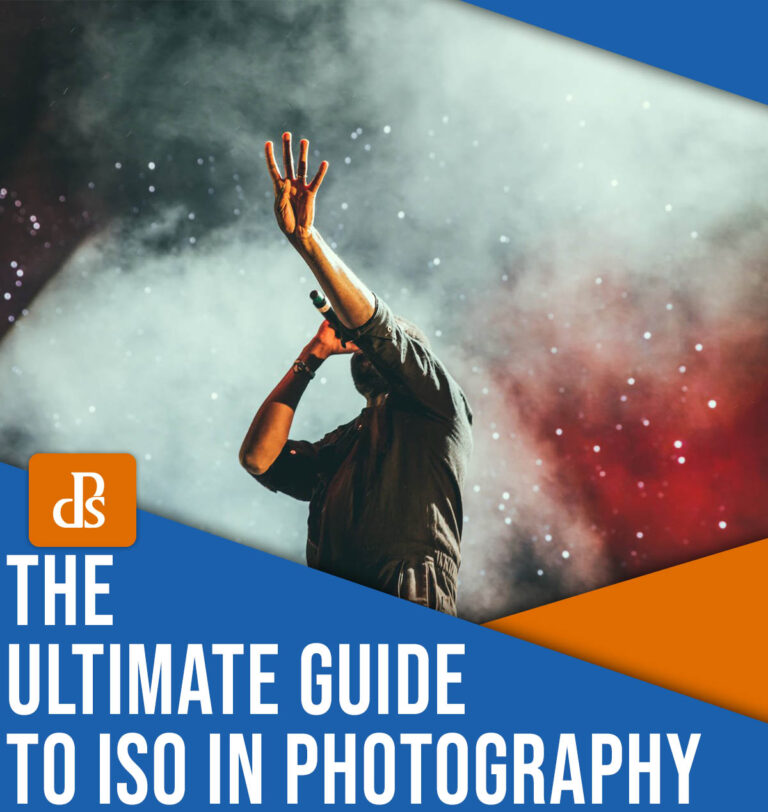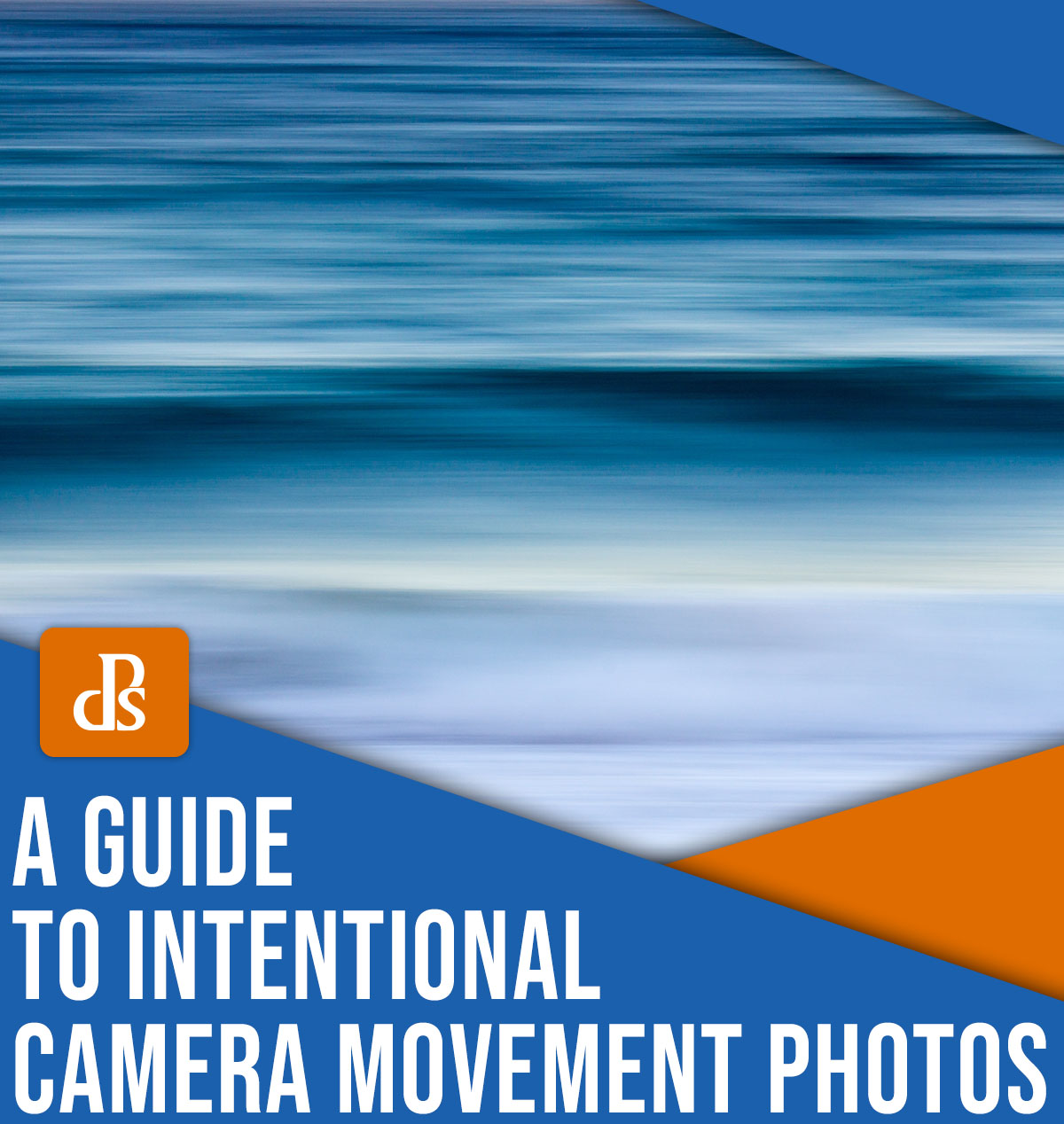
This article was updated in August 2024 with contributions from Richard Beech and Jaymes Dempsey.
If you’re tired of capturing the same old static images and are looking to re-energize yourself with a dash of creativity, then I highly recommend intentional camera movement photography.
This technique is all about breaking the rules and embracing the beauty of blur. By intentionally moving your camera while the shutter is open, you can create mesmerizing, dreamlike images that defy convention. The results are reminiscent of an Impressionist painting – except instead of a paintbrush, you use a camera!
Note that ICM photography isn’t just about waving your camera around and hoping for the best; it requires real skill and relies on a combination of control and experimentation. Of course, fooling around with ICM techniques is part of the fun, but if you want to get good results right off the bat, I do have plenty of tips, tricks, and hints to help you out.
Bottom line: By mastering the right techniques and settings, you can capture breathtaking shots that leave you (and your viewers!) in awe. So if you’re ready to start capturing abstract masterpieces, let’s dive right in!
What is ICM photography?
Intentional camera movement photography (ICM) is a technique that lets you create stunning, abstract images by moving your camera while capturing the shot.

While not a difficult technique; in fact, the beauty of ICM photography lies in its simplicity. All you need to do is adjust your camera settings to keep the shutter open for longer than usual. Then, as you intentionally move your camera from one point to another, your camera captures the moving scene and transforms it into dreamy, blurry subjects while the world rushes past.
When is the intentional camera movement technique useful?
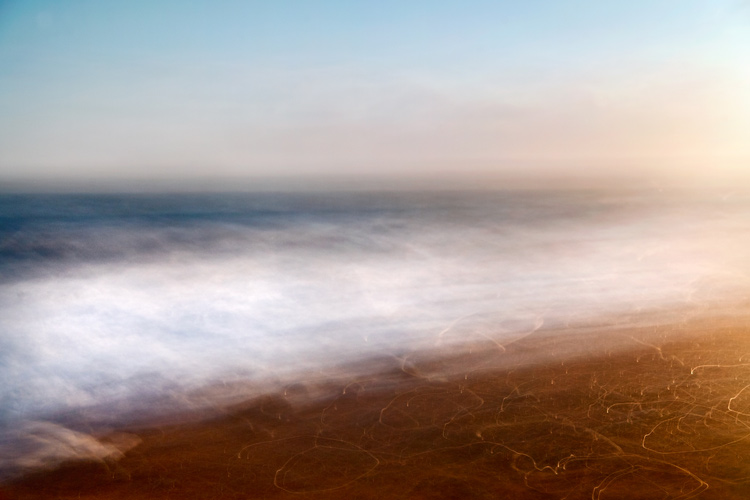
You can use the ICM technique to photograph a wide array of subjects. Here are a handful of scenarios where ICM can truly shine:
- Landscapes: One of the best uses of ICM is in capturing breathtaking landscapes. By intentionally blurring the details, you can emphasize the lines, forms, and vibrant colors present in nature. Whether you’re photographing a dense forest, a vast ocean, or an expansive prairie, ICM can help you create images that go beyond the basic “facts” of the scene.
- Flower photography: If you’re passionate about capturing the delicate beauty of flowers, ICM can add a touch of abstraction to your images. By intentionally blurring the scene, you can highlight the vibrant colors and elegant shapes of the flowers, creating a dreamy and artistic interpretation of nature. (This is an approach that I often use when I start to get tired of my conventional flower photos. It works especially well when photographing in the late evening since the light is soft but weak.)
- Street photography: Surprisingly, ICM can even be incorporated into street photography. It offers a unique way to accentuate the architectural lines of buildings and convey the fast-paced energy of urban life. By intentionally moving your camera while capturing the scene, you can infuse your street photographs with a sense of motion and dynamism.
- Moving subjects: ICM isn’t just for stationary subjects. In fact, it can be particularly compelling when applied to moving subjects such as cars, sports players, or wildlife. By deliberately following the movement with your camera, you can create a captivating effect where the subject remains relatively sharp against a beautifully smooth and dynamic background. (This technique is also known as panning.)
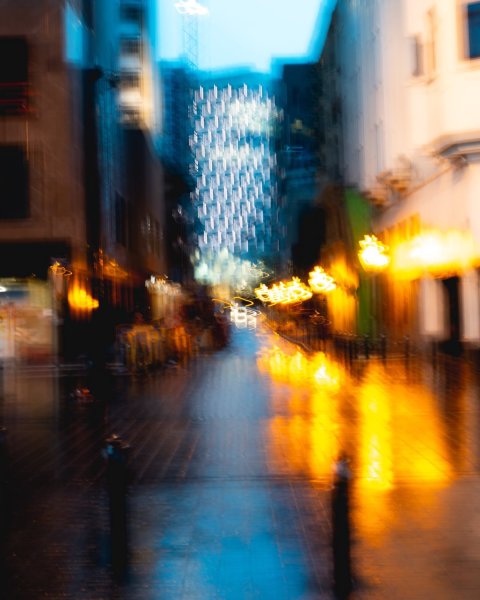
Bottom line: ICM photography allows you to move past traditional photography and explore new dimensions of artistry. With the right subjects and a dash of experimentation, you can achieve remarkable results, even when you’re faced with a subject that seems uninteresting on its face.
Essential equipment for ICM photography
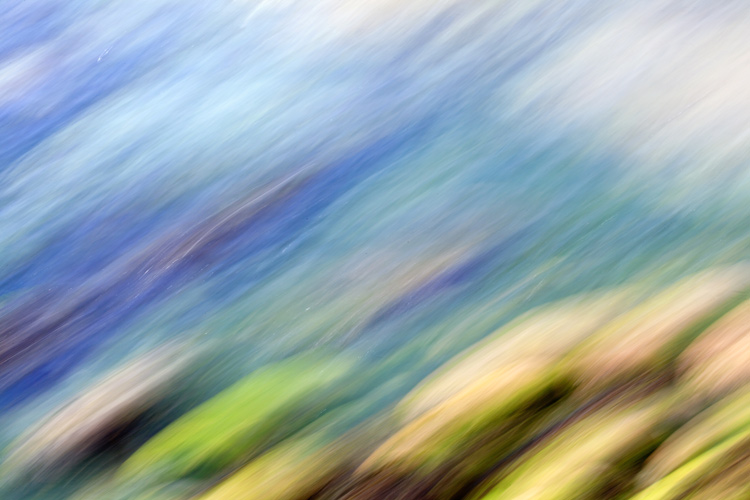
The intentional camera movement approach is incredibly accessible. You don’t need fancy or expensive gear to get started. Here’s what I recommend:
- Camera: Any camera that allows you to manually adjust the shutter speed will work. This includes DSLR and interchangeable-lens mirrorless cameras.
- Lens: While you can use any lens for ICM photography, a slightly longer lens, like an 85mm or a 70-200mm, can make it easier to achieve strong blur effects. Longer lenses also help you focus on interesting patterns and colors. If possible, use a lens with manual focusing capabilities.
- Filters: ICM photography requires long shutter speeds, which means you’ll need to control the amount of light hitting the camera sensor. If you shoot during the early morning or evening, you shouldn’t have a major problem. But if you want to try ICM during the day, consider using a neutral density (ND) filter. It acts like sunglasses for your lens, reducing the light and preventing overexposure. Another option is a polarizing filter, which cuts down on light and enhances colors. I personally prefer starting with a polarizing filter and adding a 2-stop or 4-stop ND filter if needed.
- Tripod (optional): If you want ultra-smooth ICM images with flat horizons or vertical lines, a tripod can be helpful, though I do recommend investing in a pan-and-tilt head for the best results. However, in most cases, a tripod isn’t necessary. You can achieve great ICM images with just your camera, lens, and creative movements.
Remember, the gear doesn’t make the photographer. It’s your creativity and vision that truly matter in ICM photography. So don’t worry if you don’t have the latest equipment. Focus on exploring the technique and capturing unique images with what you have.
The best ICM photography settings
If you’re ready to dive into the exciting world of intentional camera movement photography, it’s crucial to set your camera up properly to achieve those captivating and dreamy effects. Here are the basic ICM settings I recommend:
- Shutter Priority mode
- 1/2s shutter speed
- ISO 100
- Manual focus
- Image stabilization off
But it really depends on the light, the lens, the subject, and your creative vision, so it’s important to understand your settings on a deeper level.
You see, doing intentional camera movement photography is primarily about controlling the shutter speed. Longer shutter speeds allow you to move your camera for more time, hence increasing the blur effect – whereas shorter shutter speeds only let you move your camera for fractions of a second, decreasing the blur effect. Therefore, by manually changing the shutter speed value, you can change the intensity of the effect!
Shutter Priority mode, unlike Aperture Priority, Program, or Auto mode, offers complete control over your camera’s shutter speed, making it an ideal choice for the ICM technique. You can set the desired shutter speed and ISO, while the camera automatically selects an appropriate aperture for a well-exposed image.
When it comes to selecting a specific shutter speed for ICM photography, there is no universal best choice. The desired effect depends on the look you want to achieve. For an ultra-abstract shot, you might opt for a longer exposure, such as 10 seconds. On the other hand, if you prefer a subtly blurry image, a faster shutter speed, like 1/30s, might be suitable.
Additionally, consider that the length of your lens can affect the level of blur, with longer lenses producing greater blur than wider lenses. However, as a starting point, I recommend trying out a shutter speed of 1/2s. If you’re uncertain, experiment with different shutter speeds, review the results on your camera’s screen, make adjustments, and continue refining your technique.
I highly recommend using your camera’s base ISO setting. Not only does it prevent unsightly noise from compromising your images, but it also allows you to extend the shutter speed further, even in bright lighting conditions.
And to ensure that your subject remains (relatively) sharp, manually focus your lens in advance. This way, you won’t have to worry about the camera struggling to find focus, which can be a problem in low-light situations or when using a neutral-density filter.
Finally, if your lens includes image stabilization, remember to deactivate it. Image stabilization tries to compensate for motion, which can hinder the desired blur effect in ICM photography.
How to do ICM photography: My three-step approach
Now that you’re familiar with the basic ICM settings and gear, it’s time to have some fun! Here’s what you do to achieve amazing results:
Step 1: Choose a subject
The first step to creating amazing ICM shots is selecting the perfect subject to work with.
Now, you might be wondering, “What’s the best subject for ICM photography?” Well, the fantastic thing about ICM is that you can get creative with just about anything! But as you’re starting out, it’s helpful to pick a subject with clear lines and interesting shapes.
For example, common ICM subjects are rows of trees in a forest or strong horizon lines at the beach. Even the edges of tall buildings can make for captivating ICM subjects. And the more color and texture you can find in your scene, the better – it adds some wonderful pizzazz and definition to your shots!

A quick tip: Shooting in low-light conditions is ideal for ICM, but you also want to make sure that the light is good (i.e., relatively soft). So if you can, try to plan your ICM adventures during the magical golden hours – just after sunrise and just before sunset – or during the blue hour. Working at night can also produce some stunning results.
Of course, you can experiment with ICM in bright light too – like on a sunny afternoon – but in that case, you’ll often need to use a filter to prevent overexposure, and the harsher light can result in harsh contrasts. (Not that harsh contrast is always bad, but it’s just something to keep in mind!)
Step 2: Select your settings and compose
Once you’ve got your subject in mind, let’s dive into the nitty-gritty of setting up your shot. It’s time to position your subject just right and get those settings dialed in. Here’s how to do it:
First things first, take a moment to frame your shot. Remember, the end result won’t resemble what you see through the viewfinder, but it’s still important to consider the size and position of the main elements in your scene. Move closer or farther away, or adjust your zoom, until you’re satisfied with the composition. Then switch your lens to manual focus and turn the lens focus ring until your subject is reasonably sharp.

Set your camera to Shutter Priority mode and immediately choose ISO 100. Think about how heavily you want your subject to blur and choose a shutter speed accordingly. As I said above, 1/2s is a good starting point, but you might potentially start at 1s or more if you want a lot of blur.
One important note: Keep an eye on the aperture value suggested by your camera. If it’s blinking or showing “high,” it means the light is too strong, and your image will be overexposed. In that case, you have two options. You can either increase the shutter speed until the blinking disappears, or you can use a filter to reduce the amount of light entering the camera. (If you do add a filter, make sure you check the aperture value one more time before proceeding!)
Step 3: Move your camera while pressing the shutter

At this point, you’re ready to take a photo, so start moving your camera in a smooth and deliberate manner. It’s up to you how you want to move it – you can experiment with circles, straight lines, zigzags, or even rotating the camera for a spiral effect. You can also play around with changing the focal length of your lens during the exposure to create a zoom effect, like this:
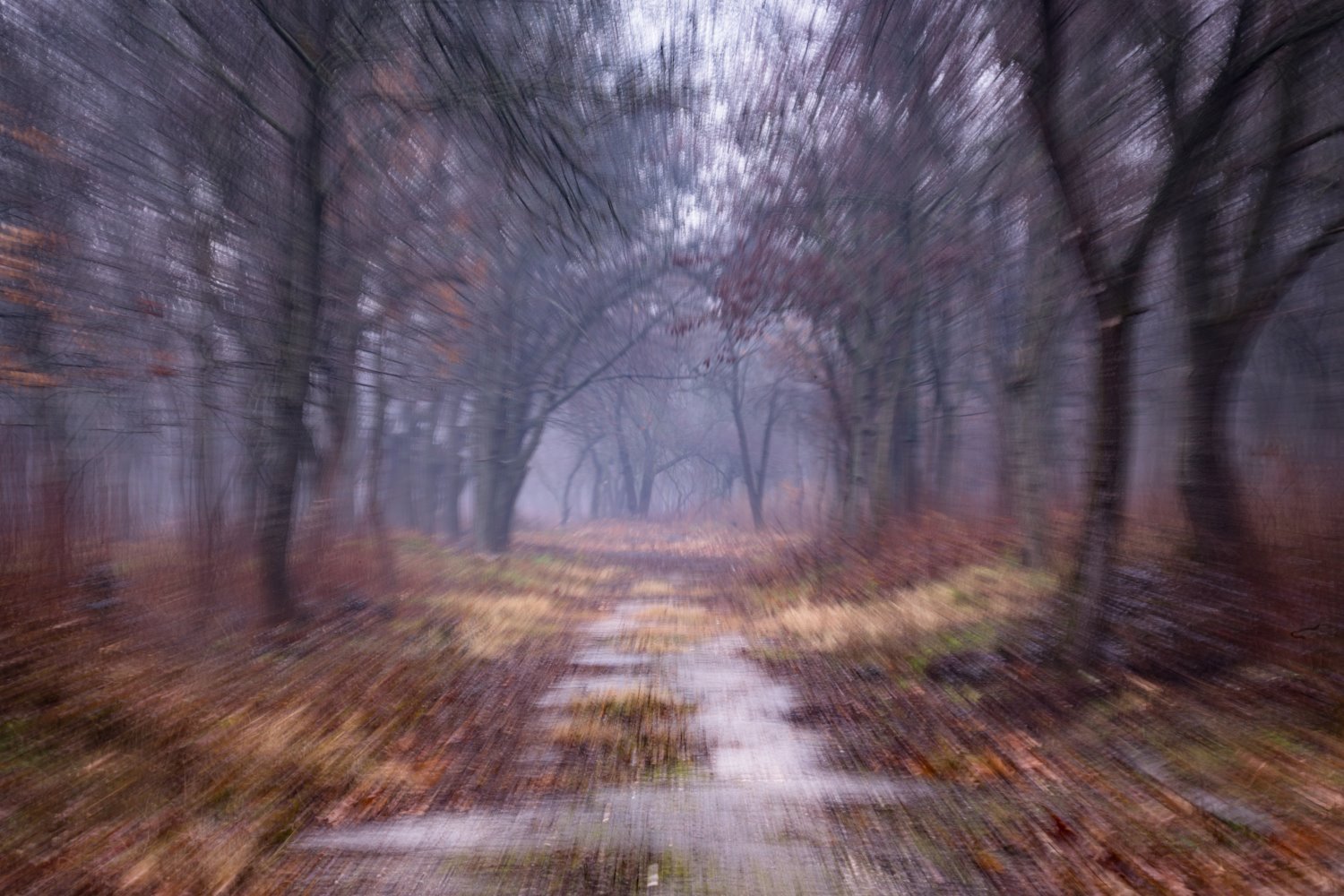
Once you’ve got your camera in motion, gently press the shutter button while keeping the camera moving. This simultaneous movement and shutter press is what will give your photo that eye-catching ICM look.
Remember, the final outcome of your images will depend on the speed, direction, and smoothness of your camera movements. I don’t want to sound like a broken record, but don’t be afraid to try out different techniques and experiment with various styles!

After capturing a shot, take a moment to review it on the LCD screen of your camera. Ask yourself some questions: Was the shutter speed too fast or too slow? Does the composition look pleasing to the eye? How did the camera movement you chose impact the overall image?
Based on your assessment, make any necessary adjustments to your settings and approach, and give it another go. Don’t be discouraged if your first attempts don’t turn out as expected. ICM photography is all about trial and error, so keep exploring and refining your technique.
Intentional camera movement tips
Looking to quickly elevate your ICM photography? These tips and tricks can make a huge difference!
1. Take a lot of photos
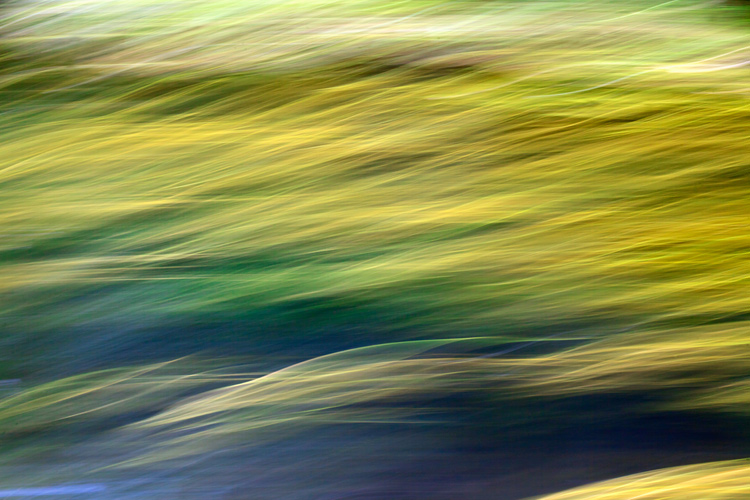
ICM photography is unpredictable and can require a bit of trial and error to master. If you’re only snapping a few shots, chances are you won’t end up with anything extraordinary, and you’ll miss out on valuable learning opportunities.
To truly excel at intentional camera movement, you need to dedicate ample time to shooting and exploring different possibilities. Don’t be afraid to click that shutter button repeatedly! The more photos you take, the more you’ll familiarize yourself with the nuances of ICM and understand what works and what doesn’t.
Once you’ve captured a bunch of shots, set aside some quality time to review them. Take a close look at each image and consider what you like and dislike about it. Pay attention to the various elements, the movement, and the overall composition. This process of reflection and analysis will help you refine your technique and develop your own style.
Additionally, I want to reiterate: Don’t be afraid to experiment with different focal lengths and subjects. By trying out various approaches, you’ll gain a better sense of your preferences and discover the aspects of ICM photography that truly resonate with you.
2. Consider including recognizable elements
Intentional camera movement photography is all about creating abstract images, but adding a touch of clarity or a recognizable element can enhance the overall impact of your final photo. Think of it as giving your viewer an anchor amidst the artistic chaos.
Basically, including at least one sharp or easily identifiable subject within your abstract composition can provide a point of reference for your audience. It gives them something to hold onto while they explore the rest of the blur.
For example, you might capture the graceful movement of trees in a forest, with leaves blending into a dreamy haze. But instead of creating a disorienting blur, by including recognizable tree trunks, the scene will have more structure, like this:

3. Shoot the same subject at different times

Here’s one more fun approach that can really level up your intentional camera movement skills: shoot the same subject at different times of the day. Light and shadow play a significant role in ICM, and by capturing your subject during various lighting conditions, you’ll discover how the atmosphere and mood can change dramatically.
Once you’ve found a subject that catches your eye, don’t just snap a single shot and move on. Make a mental note of the subject and return to it repeatedly, capturing ICM shots at different times, such as during the golden hours (just after sunrise and just before sunset), the blue hour (the brief period before sunrise and after sunset), or even at night.
By exploring these different timeframes, you’ll witness how the interplay of light and shadow transforms your subject, creating unique and captivating ICM images. Not only will this allow you to experiment with different effects, but it will also give you a chance to refine your skills and find your own personal style.
Intentional camera movement photography: final words
And there you have it! We’ve reached the end of our wild and wonderful journey through the world of ICM photography. You’ve learned the ins and outs of this mesmerizing technique, including what it is, how it works, and you can use it to capture amazing abstract images.
Remember, intentional camera movement is all about breaking free from the constraints of traditional photography and letting your imagination run wild!
So grab your camera, go out into the world, and start practicing. Embrace the happy accidents, learn from the not-so-successful experiments, and keep pushing your boundaries. It may take a few shots (or a few hundred) to find your rhythm and discover your signature style, so whatever you do, don’t give up!
Now over to you:
Do you have any ICM tips we missed? Share your thoughts in the comments below!
-
GENERAL
-
PREPARATION
-
SETTINGS
-
LIGHTING
-
COMPOSITION
-
GEAR
-
ADVANCED GUIDES
-
CREATIVE TECHNIQUES
-
POST-PROCESSING
-
INSPIRATION





